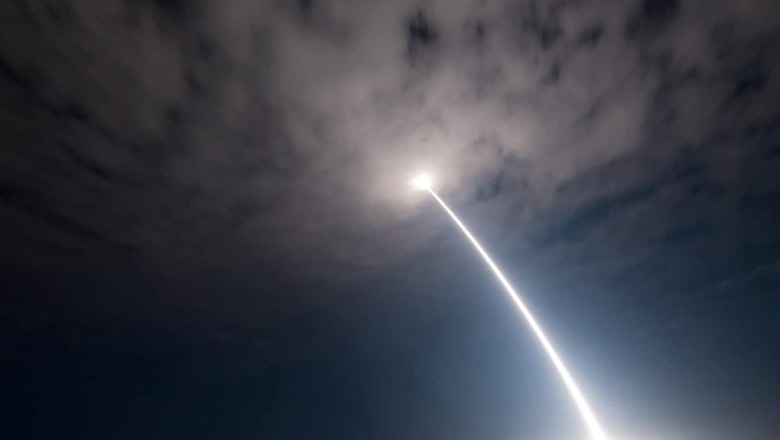
views
The replacement for the ground-based U.S. nuclear arsenal anchored by the Minuteman III has officially busted through its $95.8 billion budget due to the COVID-19 pandemic and inflation, the Air Force said on Thursday.
The Air Force is notifying Congress that the program, being designed and managed by Northrop Grumman Corp (NOC.N), opens new tab, is now at least 37% over a pre-pandemic cost estimate finalized in September 2020, Andrew Hunter, assistant secretary of the Air Force for Acquisition, Technology and Logistics, told Reuters in an interview.
Program changes, such as making bigger silos and switching to more durable materials, have also raised costs. The total program cost, now estimated above $131 billion, could grow further as the U.S. Secretary of Defense concludes a review by the summer. While cost overruns regularly occur at the Department of Defense, the Minuteman intercontinental ballistic missile (ICBM) is especially expensive to replace.
The missile network is part of the so-called nuclear triad that includes nuclear-tipped ground-based ICBM, nuclear-capable bomber aircraft and submarine-launched nuclear arms. “It’s been over 70 years since we did the ground piece of this,” Hunter said. “We didn’t estimate it well.” Blasting through cost estimate thresholds triggers the Nunn-McCurdy Act. The 1982 law requires the Pentagon to formally justify to Congress the importance of a program in which unit acquisition costs have risen more than 25% above a baseline, and to show there are no alternatives.
The cost overrun is most acutely felt in modernizing the 450 missile silos and their command infrastructure, which includes 7,500 miles of new cables. The program will also buy trucks, training, command buildings and 659 missiles.
The missiles themselves are not to blame for the cost overrun, Hunter said.
The $95.8 billion Minuteman III replacement program, named Sentinel, has multiple phases including development, design and procurement.
In 2020 Northrop won a $13.3 billion, opens new tab portion of that pie for an engineering and manufacturing development (EMD) contract to design, test, evaluate and advance the program. Over time, specifications like square footage grew, things within the silos increased and moved, and costs rose due to the new systems with greater power and heating, ventilation and air conditioning demands, an Air Force official said on condition of anonymity.
With 450 missile silos, any small change is magnified, the Air Force official said.
Northrop said it “is committed to supporting the Air Force as it assesses and updates acquisition cost forecasts for the future phases of the program, to include construction projects, production, and deployment of the weapon system.” Estimates generated in the $13.3 billion EMD phase indicate that the next phase, procurement, will cost more than the $61 billion contemplated under the $95.8 billion program topline. Procurement would begin in the late 2020s.
When Northrop won the contract in 2020 it said, “Upon successful completion of EMD, the Northrop Grumman team will begin producing and delivering a modern and fully integrated weapon system to meet the Air Force schedule of initial operational capability by 2029.”
“Sentinel is absolutely necessary for the future of our nuclear deterrent,” Mike Rogers, chairman of the powerful House Armed Services Committee, said. “I’m committed to conducting vigorous oversight of the program and ensuring the Air Force follows through on making the necessary changes to address the cost overruns.” “We’re going to continue to execute the program while the Nunn-McCurdy review is happening,” Hunter said. “Whether the program’s timeline will shift, that is pursuant to the Office of the Secretary of Defense review.”




















Comments
0 comment